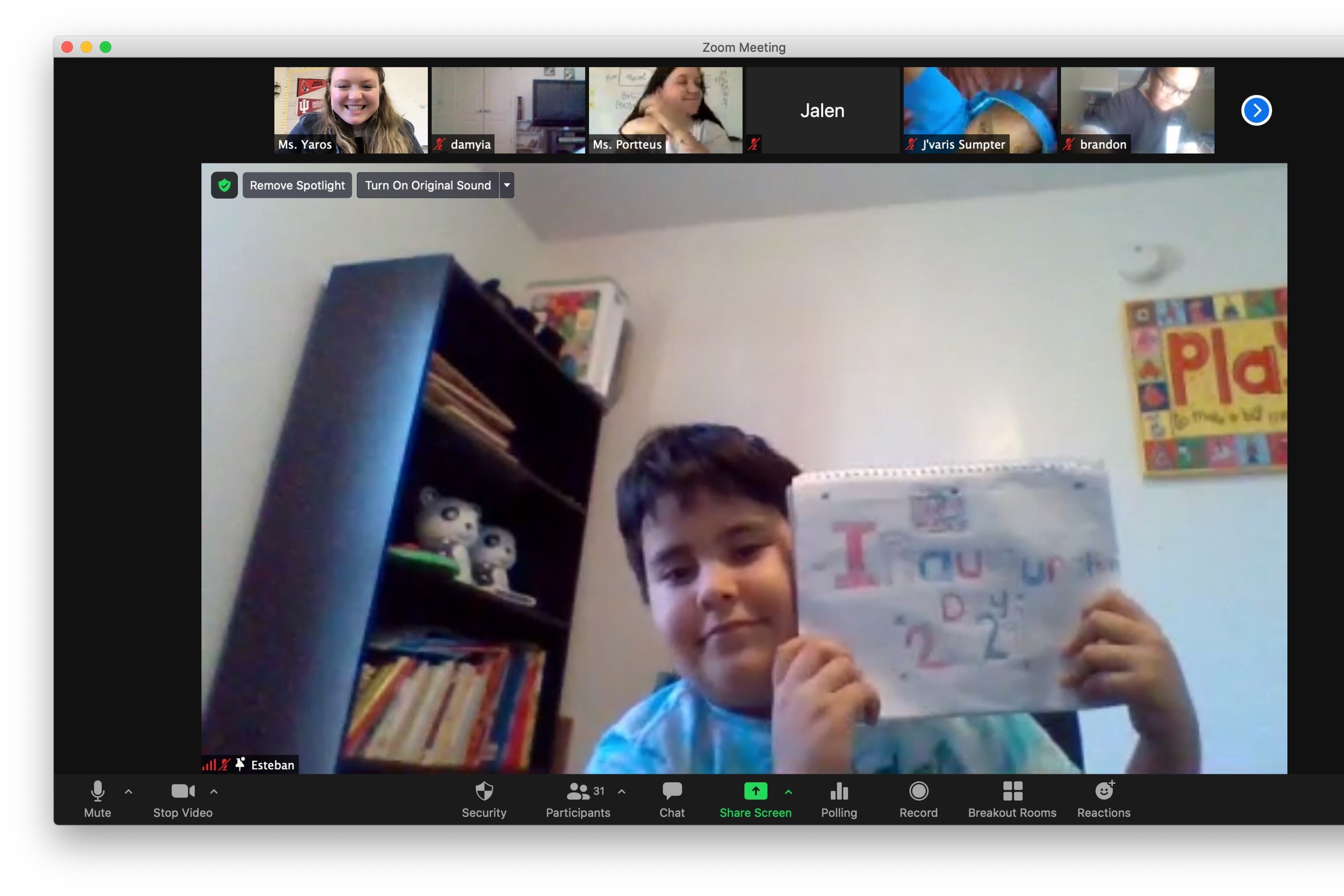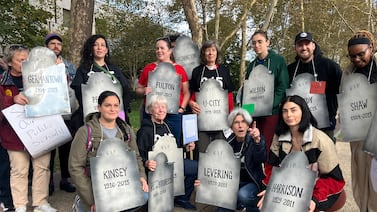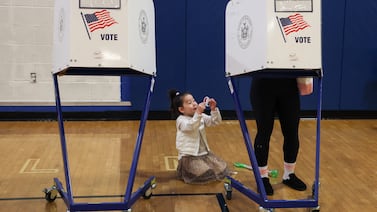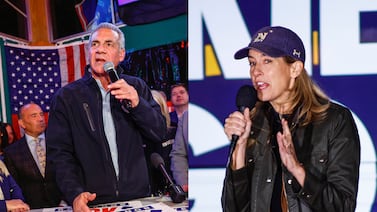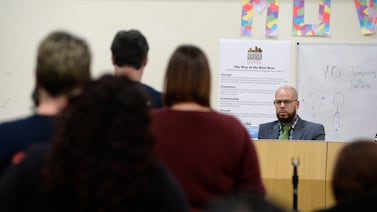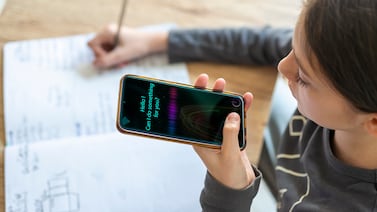More than anything else her students learn this year, even more than math, teacher Taelor Garrett wants her predominately Black fifth graders to understand that they have a place in this country.
On Wednesday, she and the other fifth-grade teachers seized the chance to drive home that message with the inauguration of Joe Biden as president and Kamala Harris as the first Black, South Asian, and woman vice president.
Many Indiana teachers are using the dawn of a new administration to teach about the democratic process amid divisive times, just two weeks after a violent white supremacist mob egged on by then-President Donald Trump rampaged through the Capitol in Washington, D.C.
Garrett, a teacher at KIPP Indy Unite Elementary School in the Martindale-Brightwood area, started the day discussing the significance of Inauguration Day and playing clips of inaugurations of the past. After a math lesson, students drafted letters to the new president and vice president.
A student named Andre posted in the class Zoom chat box that he would like Biden and Harris to take action against corrupt police officers and change the way that they treat Black people.
Another student wrote that he hoped Biden would try to stop the COVID pandemic.
He asked Harris “to stop the racism so the country can be better and so they can stop killing black and brown people.”
Some students put forth less serious comments. One asked if it would be rude to congratulate Biden on being the oldest president of the United States. Biden is 78.
More than their written comments, the chat box that appeared on the side of the class Zoom video reflected the 34 students’ interest and enthusiasm. It buzzed with excitement when Supreme Court Justice Sonia Sotomayor swore in Harris. And it filled with comments when Lady Gaga gave her emphatic rendition of “The Star-Spangled Banner” and Jennifer Lopez delivered an almost wistful “This Land Is Your Land.”
Elsewhere, teachers planned to take up the inauguration later this week. Fourth grade teacher Samantha Yaros has been talking about the importance of the peaceful transfer of power in American democracy.
Her students at Emma Donnan Elementary and Middle School live on the southeast side of Indianapolis, where a Confederate statue was removed last summer in Garfield Park. She has been talking to her students about current events like the election and insurrection. Her mix of white, Black, and Latino students are making connections between the American Revolution and recent events.
She talked to her students in the morning about the inauguration. The students asked questions about the reason for the oath and date Jan. 20. Yaros said her students were sad that some of the traditions couldn’t happen because of the pandemic.
In just two election cycles, she said, her students will be able to vote. But she believes that even now, they can make their voices heard in the classroom, city, social media, and the community.
“They already have their own voices,” Yaros said. “I’m just helping to show them the connections.”
Up in northwest Indiana at Valparaiso High School, English as a second language teacher Rocio Rodea watched the inauguration away from her students, who were at home doing independent work Wednesday. She did post a link to the inauguration in the online system that she uses for assignments. Rodea opened the floor for her students to discuss historic events like the election and the insurrection, and plans to do the same on Thursday.
Rodea, who is Mexican-American, said she became emotional just watching the diverse representation at the ceremonies. She teaches predominantly immigrant students from countries like Mexico, Venezuela, Vietnam, and Algeria.
Just a couple of weeks ago, her students discussed the Capitol insurrection and observed how in the beginning, no one got arrested and how different the police responded to the Black Lives Matter protesters in the summer. They discussed words like breach, sedition, and treason. This week she’ll teach words like oath, affirm, and solemnly, to drive home the importance of leaders’ promises.
Even though students may visually see diversity, Rodea said she wants to talk to her students about how Harris’ parents were immigrants from Jamaica and India, just as many of her students’ families came from other nations.
She believes it’s her duty as an English teacher to discuss historic events with her students of color, many who are immigrants, about the power they have to make change.
“They need to know that their opinions matter, their voices matter,” Rodea said. “A lot of them are just very used to not being heard, not being listened to.”

